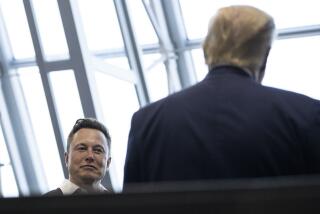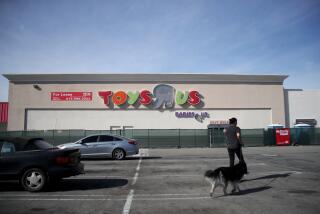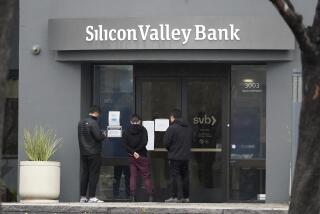Creativity Can Ease Start-Up’s Capital Problems
- Share via
The lack of one crucial resource for a start-up, capital, can tempt you to skimp on another, management. The result is that the start-up is often crude, fragile and risky, like the first airplane flown by the Wright brothers.
Many an entrepreneur finds a creative way to succeed anyway, as the Wright brothers did--and as Mark Skiba did in launching his Marina del Rey company, Storactive Inc., which makes online computer backup software.
Skiba was not a rookie entrepreneur when he launched Storactive in 1997. In 1983, he founded a graphics utilities software company called Inset Systems Inc., with $200,000 in capital from his parents, augmented by another $40,000 in angel financing two years later.
He sold Inset Systems in 1996, giving his backers a return in excess of 40 times on their investments, and he came away from the experience a “serial entrepreneur,” as he puts it, ready to try again. This time, however, he didn’t skimp on management, and he learned how to raise venture capital.
Skiba had only $500,000 to get Storactive off the ground, all of it his own capital and hardly enough to round up a solid team of managers, much less keep them happy.
His solution?
He lured his management team--Chief Operating Officer Joe Cheng, marketing Vice President Nancy Mohler and technology Vice President Mikhail Ryzhkin, who among them commanded nearly 45 years of experience in the high-tech industry--to Storactive by making them partner-investors in the business.
He persuaded them to lend money to the company in exchange for warrants convertible to stock, raising another $200,000 to go with Skiba’s own $500,000.
That he succeeded with this strategy testifies to the strength of his business model, of course. His managers would not have signed on, much less put their own money into the venture, had they not believed that Skiba had a good thing in Storactive.
In any case, the strategy got Skiba a team of committed professionals--and just enough cash to get things going.
“I brought in expertise as well as some capital,” Skiba says. “I had learned the lesson that it’s a mistake to think that because you don’t have a lot of capital, you can’t get good people. I got people with a lot of years of experience in the industry, and they were looking to jump to the next level.”
Skiba’s inventiveness helped him solve another problem in the high-tech industry--the shortage of skilled workers.
Given his limited capital, Skiba knew he’d find it hard to staff his research and development department. He also knew that the collapse of the Soviet Union a decade ago left many sophisticated Russian scientists without jobs. So he and Ryzhkin, his technology vice president who is himself Russian, went to Moscow to assemble a staff of 20 software writers.
“These were Russian academy of sciences people,” Skiba says, “and we couldn’t have hired people of that caliber here on our budget. In a way it gave us an unfair advantage: We did maybe four times as much development there as we could have done on the same budget here.”
His management and R&D; teams in place, Skiba launched an effort to raise venture capital a year ago last July. Like other entrepreneurs, he found it tough going to find backers in Southern California and, turning his sights elsewhere, made contact with the Golden State Capital Network, headquartered in Chico, Calif., which was organizing a venture capital conference to be held in Napa, Calif., last February.
Golden State Capital Network President Jon Gregory sent Skiba to Garage.com. The Palo Alto group operates an online service (https://www.garage.com) that matches entrepreneurs and financing sources and puts entrepreneurs through an intensive grooming process, polishing their presentations and sharpening their “stories” to prepare them to meet with potential backers.
The effort worked for Skiba. One of 17 entrepreneurs making presentations to backers at the Napa conference, he won commitments for $4.3 million from five venture capitalists and more than a dozen angels.
It took months to close the deals with his backers, Skiba says, and even with $4.3 million in the bank, Storactive remains a fledgling company. Revenue reached only $300,000 last year.
But, he says, the lessons of the experience are clear.
* Don’t let a lack of capital keep you from assembling a top-notch management team.
* Get all the help you can find in preparing to pitch outside backers.
“It took us a long time to raise the $4.3 million because we had to deal with so many different sources,” Skiba says. “The good news is that we now have a wonderful network of resources that will help get us to the next level--maybe additional rounds of financing and a public offering at some point.
“Getting the first investors on board was difficult,” he adds. “But once we did that, we almost had to turn the others away.”
Juan Hovey can be reached at (805) 492-7909 or at jhovey@gte.net.
More to Read
Inside the business of entertainment
The Wide Shot brings you news, analysis and insights on everything from streaming wars to production — and what it all means for the future.
You may occasionally receive promotional content from the Los Angeles Times.










